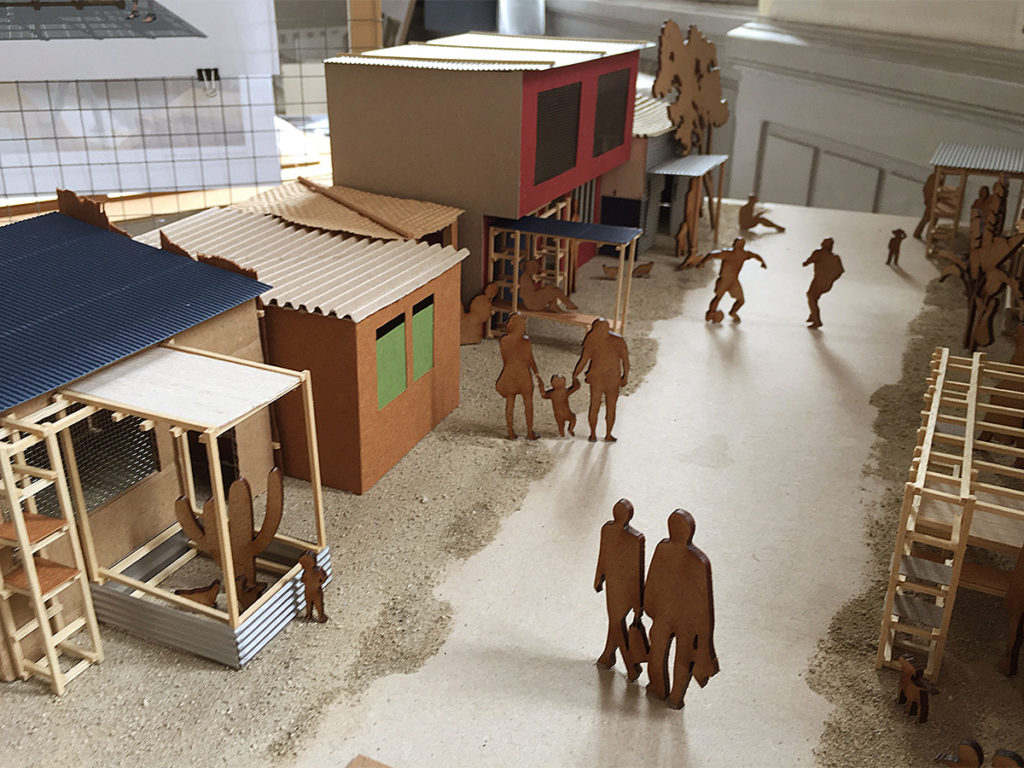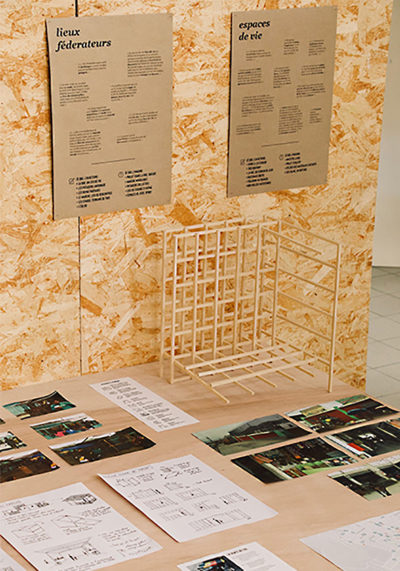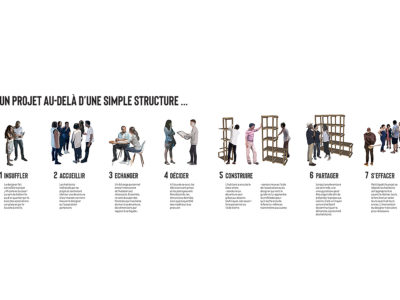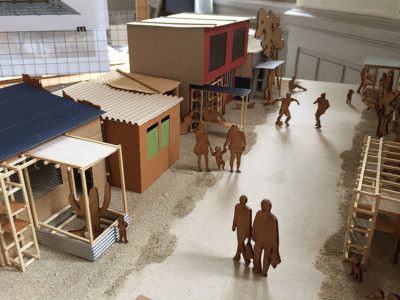Le bidonville est un lieu de gestation urbaine riche d’une architecture informelle fruit de l’implication de ses habitants. Comprendre ce tissu relationnel, le potentiel architectural et urbain qui organise le bidonville est un enseignement considérable pour le designer que je vais devenir.
L’architecture tend à se réinventer et ici, il ne s’agit pas d’une participation de l’habitant au projet mais bien d’une participation de l’architecte, et, ou designer à la conception et construction des bidonvilliens.
« Mi calle es tu casa » est un projet inscrit à La Ensenada, un bidonville de Lima au Pérou, qui propose aux habitants une structure d’organisation des pas de portes pour accompagner les usages déjà présents dans la rue, véritable lieu de vie.
En partenariat avec l’association sur place Mano a Mano, ma participation de designer est de transmettre des méthodes de constructions réalisables par chacun, confier le projet aux mains de la population locale, pour que celui ci existe et évolue avec chacun des habitants.
The slum is a place of urban gestation rich in an informal architecture resulting from the involvement of its inhabitants. Understanding this relational fabric, the architectural and urban potential that organizes the slum is a considerable teaching for the designer that I will become.
Architecture tends to reinvent itself and here, it is not a matter of the resident’s participation in the project, but of the architect’s participation, and, or designer’s participation in the design and construction of the slums.
“Mi calle es tu casa” is a project inscribed in La Ensenada, a slum in Lima, Peru, which proposes to the inhabitants a structure of organization of the doorsteps to accompany the uses already present in the street, real place of life.
In partnership with the association on the spot Mano a Mano, my participation as a designer is to transmit methods of construction feasible by everyone, entrust the project to the local population, so that it exists and evolves with each of the inhabitants.



